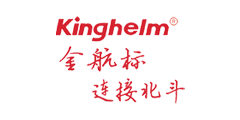The Difference Between IPEX Interface 1st Generation and 4th Generation: Performance Improvement and Diversified Applications

With the rapid development of technology, the IPEX Interface has undergone continuous evolution and improvement. In this article, Kinghelm will discuss in detail the differences between the 1st and 4th generations of the IPEX interface, including their application scenarios, usage methods, and advantages. Through comparative analysis, Kinghelm will explore which interface is more suitable for different situations.
IPEX Interface 1st Generation:
As an early version, the 1st generation of the IPEX interface is known for its simplicity and ease of use, making it suitable for most conventional application scenarios. This interface uses standard BNC connectors and supports 10BaseT and 100BaseTX Ethernet transmission, with speeds of up to 100Mbps. Additionally, the 1st generation of the IPEX interface has good mobility and weather resistance, making it suitable for various harsh environments.
However, with the advancement of network technology, the transmission speed of the 1st generation IPEX interface has gradually become a bottleneck. Furthermore, this interface also has certain limitations in supporting more advanced network protocols.
IPEX Interface 4th Generation:
In comparison, the 4th generation of the IPEX interface has made significant improvements in terms of transmission speed, application scenarios, and functionality support. The 4th generation of the IPEX interface adopts a completely new connector design and supports a transmission speed of 10Gbps, which is 10 times faster than the 1st generation. Additionally, this interface is compatible with multiple network protocols, including IPv6, ARP, ICMP, etc., greatly expanding its application range.
In terms of adaptability to harsh environments, the 4th generation of the IPEX interface has also made great improvements. It not only has higher mechanical stability but also better weather resistance and anti-interference performance. This makes the interface widely applicable in industrial automation, intelligent transportation, security monitoring, and other fields.

Differences Analysis:
From the above introduction, we can clearly see that the main differences between IPEX interface 1st and 4th generations lie in transmission speed, application scenarios, and functionality support. Specifically:
Transmission Speed: The 4th generation of the IPEX interface has a transmission speed that is 10 times faster than the 1st generation, greatly improving data transmission efficiency. This is an important advantage for applications that require high-speed transmission.
Application Scenarios: The 4th generation of the IPEX interface supports more network protocols and is suitable for a wider range of application fields. For example, in industrial automation, it is necessary to support protocols like IPv6 to ensure remote monitoring and management of devices. The 1st generation of the IPEX interface may not meet this requirement.
Functionality Support: The 4th generation of the IPEX interface has made significant improvements in the connector and physical layer design, providing better signal quality and stability. Additionally, it supports auto-negotiation, which allows it to automatically select the optimal transmission rate and protocol based on the type of connected devices.
Conclusion:
Overall, the 1st and 4th generations of the IPEX interface have their own advantages and suitable application scenarios. The 1st generation interface is simple and easy to use, suitable for conventional Ethernet transmission. On the other hand, the 4th generation interface has significant improvements in transmission speed, application scenarios, and functionality support, making it suitable for high-speed transmission and diverse application requirements.
In practical applications, the choice of the appropriate IPEX interface can be based on specific scenarios. If it is in a general office or home environment, the 1st generation of the IPEX interface is already sufficient. However, for situations that require high-speed transmission and more functionality support, such as industrial automation, intelligent transportation, and security monitoring, the 4th generation of the IPEX interface can be chosen for better performance.
- +1 Like
- Add to Favorites
Recommend
- ITT Cannon APD Series Connectors for Heavy and Off-road Vehicle Applications with the Feature of Reliable Sealing up to IP67/IP69K
- Kinghelm 4th Generation of IPEX Connectors KH-IPEX4-2020, Features with Compact Size, Lightweight and Easy Installation
- IPEX Inner Needle 3rd Generation KH-IPEX3-2020 With A Maximum Supported Frequency of 6GHz
- NOVOSENSE at PCIM Europe 2023: Semiconductor Solutions for Automotive & Industrial Applications
- The First-generation IPEX Dual-head Jumper KH(RG1.13)-TX30-IPEX with Superior Electrical Performance and Reliable Transmission Capabilities
- Kinghelm RF Coaxial Connector KH-IPEX-K501-29 Featuring Highly Precise Design and Excellent Performance
- The Differences between IPEX Generations I, II, and III
- Kinghelm Introduces the KH-GPS080804-WY GPS Passive Ceramic Antenna: Revolutionizing Positioning Technology
This document is provided by Sekorm Platform for VIP exclusive service. The copyright is owned by Sekorm. Without authorization, any medias, websites or individual are not allowed to reprint. When authorizing the reprint, the link of www.sekorm.com must be indicated.





































































































































































































































































































































































































































































































































































































































































































































































































































